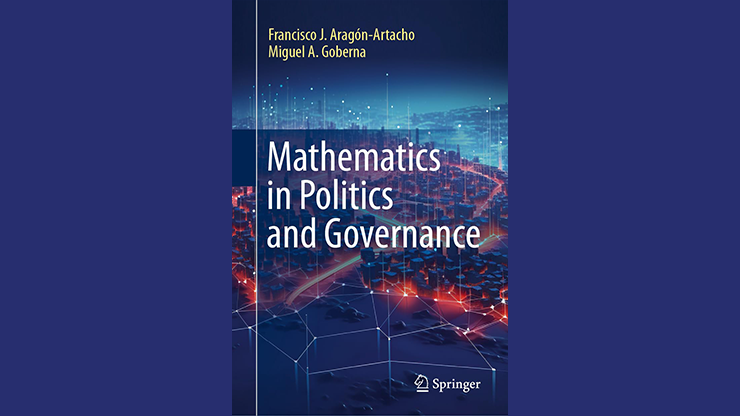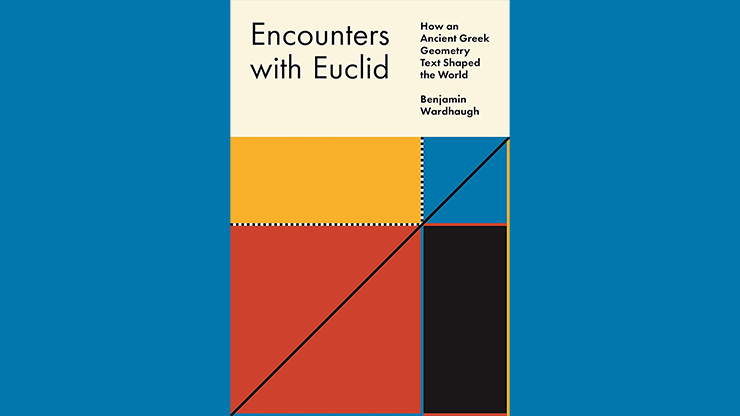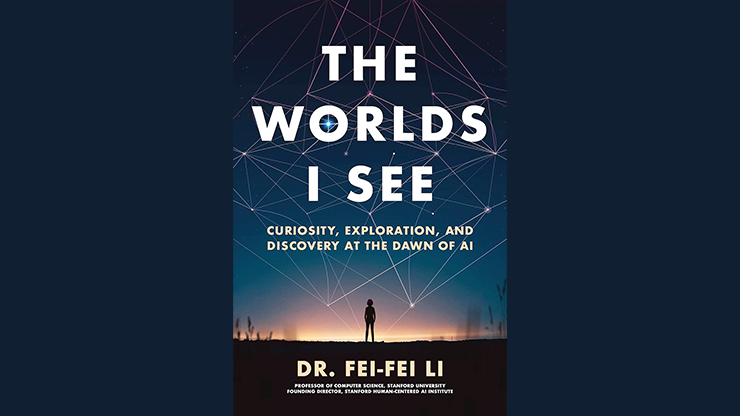The Curious History of Vectors and Tensors
Vector: A Surprising Story of Space, Time, and Mathematical Transformation. By Robyn Arianrhod. The University of Chicago Press, Chicago, IL, May 2024. 376 pages, $28.00.

In the history of science and mathematics, a concept that currently seems straightforward and unproblematic often evolved in a way that appears weirdly indirect and convoluted in hindsight. Sometimes such ideas were met with a hostility that now seems incomprehensibly wrongheaded and pointless. One noteworthy example is the emergence of the concept of vectors in the 19th century, which is the subject of the first half of Robyn Arianrhod’s new book, Vector: A Surprising Story of Space, Time, and Mathematical Transformation.
Arianrhod’s account begins with various precursors to vectors, including work by Isaac Newton and Thomas Harriot (a favorite subject for Arianrhod, who authored his biography in 2019) [1]. From our point of view, velocities, accelerations, and forces in Newtonian mechanics are all vectors; if multiple forces act on an object, then the net force is the vector sum of the individual forces. Although Newton and his successors performed these calculations correctly and drew geometric diagrams of parallelograms that we now interpret as showing the vector sum of two forces, they had no concept of a vector as such. Over the ensuing 150 years, many foundational theorems of vector analysis—the divergence theorem, Stokes’ theorem, the finite Cauchy-Schwarz inequality, and so on—were proved avant la lettre, before the concept of a vector was formulated. Interestingly, the same is true of matrices; a large mathematical literature on both determinants and eigenvalues existed well before the concept of a matrix gradually emerged during the 19th century [2].
Out of necessity, all of these developments were expressed in purely coordinate notation. The idea of a vector as a mathematical object in its own right first appeared as part of William Rowan Hamilton’s theory of quaternions. Hamilton spent many years looking for a mathematical object that could express three-dimensional (3D) rotations in the same way that complex numbers express two-dimensional rotations. In 1843, he finally solved the problem by constructing the quaternion: an expression of the form \(a+b\mathbf{i}+c\mathbf{j}+d\mathbf{k}\), where \(a\), \(b\), \(c\), and \(d\) are real numbers and \(\mathbf{i}\), \(\mathbf{j}\), and \(\mathbf{k}\) are separate square roots of \(-1\) that correspond to three orthogonal directions in space. Hamilton demonstrated that quaternions can be added, subtracted, multiplied, and divided; he also showed that a 3D rotation can be represented as a quaternion in such a way that the composition of two rotations corresponds to the product of the quaternions.
Hamilton called component \(a\) the “scalar” part of \(q\) and the sum \(b\mathbf{i}+c\mathbf{j}+d\mathbf{k}\) the “vector” part of \(q\). He noted that if \(u\) and \(v\) are quaternions with scalar part \(0\), then the two components of the product \(w=u \cdot v\) have meaningful properties: The scalar part of \(w\) is the negative of what we now call the dot product \(\vec{u} \cdot \vec{v}\), and the vector part is what we now call the cross product \(\vec{u} \times \vec{v}\).
Arianrhod tells the story of Hamilton’s discovery at length and with great gusto. After a chapter that describes the independent, lesser-known development of vectors by Hermann Grassmann, her narrative reaches its central episode: the story of how James Clerk Maxwell—in collaboration with Peter Guthrie Tait—realized that the vector part of Hamilton’s quaternions provided exactly the mathematical tool that he needed in his brilliant unification of electromagnetic theory. Maxwell, Tait, and later Oliver Heaviside formulated the algebra and calculus of vectors—including vector fields, the vector differential operator \(\vec{\nabla}\), the divergence (Maxwell called it the “convergence,” with the opposite sign), the gradient, the curl, and the Laplacian—much like how we think about these concepts today and teach them in every third-semester calculus course.
However, Maxwell’s formulation did not meet immediate acceptance. For the next 40 years, a bitter three-sided debate raged about the correct way to think about and represent this type of mathematics and physics. First, there were the vector enthusiasts, notably Maxwell (until his untimely death), Heaviside, William Kingdon Clifford, and Josiah Willard Gibbs. Second, there were those who preferred Hamilton’s original quaternions, including Tait and Alexander McAulay. Finally, there were those—especially William Thomson, who would later become Lord Kelvin—who scorned both vectors and quaternions as useless, instead insisting that everything be fully written in terms of their Cartesian components. These key players flung nasty insults back and forth for decades.
The second half of Vector details the development of tensor calculus and its central role in Albert Einstein’s general theory of relativity. This historical thread is comparatively straightforward. The backstory to tensor theory involves Carl Friedrich Gauss and Bernhard Riemann’s creation of the theory of the intrinsic curvature of manifolds, as well as Augustin-Louis Cauchy’s study of stress in continuum mechanics. Gregorio Ricci-Curbastro—who was primarily responsible for the actual theory of tensors—worked with Tullio Levi-Civita to compose a classic exposition of the theory in their 1900 textbook, Méthodes de Calcul Différentiel Absolu et Leurs Applications.
In 1912, Einstein was looking for an existing mathematical theory to use for his own theory of spacetime and gravity that would accommodate his intuitions. His friend Marcel Grossmann searched the mathematical literature and told Einstein that Riemannian geometry and the theory of tensors might have what he needed. After years of intense study and labor, Einstein finally found success; in 1915, he published his theory of general relativity in the language of tensor analysis.
Arianrhod’s book is deeply researched. Her 320 pages of text are supplemented with nearly 60 pages of endnotes that provide additional mathematical and historical detail. She also supplies a timeline, which is an invaluable apparatus for a complex narrative such as this. Her account of the history of the “vector wars” and her capsule biographies of Hamilton, Maxwell, Tait, Grassmann, Ricci-Curbastro, and Levi-Civita are vivid and fascinating. However, Arianrhod’s explanation of Einstein’s work on general relativity is less satisfying. I instead recommend the relevant chapters of Abraham Pais’ classic biography, Subtle is the Lord: The Science and the Life of Albert Einstein, which offers a much richer, clearer, and more vivid account of Einstein’s thoughts on gravity and the physical intuitions that guided him [3].
Regrettably, Vector suffers from a number of flaws that significantly diminish its value — the most important being that the mathematical exposition is often unclear. The content on quaternions and vectors in the first part of the book is tedious for readers who know the material and unenlightening for those who do not, and the sections about tensors and general relativity are frustrating for readers who know the material and impenetrable for those who do not. Of course, these latter subjects are inherently challenging. The explanation of how objects that move in a gravitational field can follow a geodesic through curved Minkowski spacetime—and the expression of this theory via Einstein’s tensor equations—is considerably more difficult than most topics in popular math books. However, readers are unlikely to gain a deeper understanding of the mathematics based on Vector’s description.
Part of this issue is that Arianrhod’s perception of the target reader is extremely inconsistent. At the beginning of the text, she writes that readers may vaguely remember vectors from high school. But by the end of the book, she is writing sentences like, “It turns out that all you have to do to change a Lorentz-covariant equation to a generally covariant one is to replace partial derivatives by invariant derivatives ... this definition means you simply have to change all the commas in the above equations to semicolons.” Anyone who wishes to progress from a nebulous grasp of vectors to a detailed understanding of tensor calculus will need to spend serious time and effort with textbooks or lectures on differential geometry, tensor theory, and general relativity. Vector will not help much with their studies. Admittedly, this type of inconsistency is somewhat common in popular science and math books, but Vector is extreme.
Another flaw, which is less important but still annoying, is Arianrhod’s tendency to wander into irrelevant tangents that often pertain to the pros and cons of 21st century technology. During her discussion about Arthur Cayley’s study of invariants, she mentions that Cayley lamented the absence of a rail connection between Lincoln and Cambridge in a letter to George Boole from the 1840s. This digression leads to a lengthy riff about technology, climate change, and Henry David Thoreau. Arianrhod later interrupts her description of tensor theory with a long aside about the use of tensors in current computer technology and quantum physics, which is unhelpful to readers who are struggling to understand tensor theory.
Arianrhod very much overstates the importance of quaternions in current mathematics and computer science. While the theory is more widely used in the present day than it was 40 years ago, it is still quite niche; few math departments offer a mathematics course that spends much time on the subject. Many current mathematicians have presumably heard the story of Hamilton carving his multiplication formula into Broom Bridge; they are likewise aware that quaternions are somehow related to 3D rotations and that their space is a flagship example of a skew field. However, I would guess that only a small fraction knows much more about them.
That being said, Vector is a valuable contribution to the history of math. Readers who skip the digressions and do not attempt to comprehend the technical materials with which they are unfamiliar will learn a lot about these remarkable and important episodes in 19th-century mathematics.
References
[1] Arianrhod, R. (2019). Thomas Harriot: A life in science. Oxford, UK: Oxford University Press.
[2] Hawkins, T. (1977). Another look at Cayley and the theory of matrices. Archives Internationales d’Histoire des Sciences, 27, 82-112.
[3] Pais, A. (1982). Subtle is the Lord: The science and the life of Albert Einstein. Oxford, UK: Oxford University Press.
About the Author
Ernest Davis
Professor, New York University
Ernest Davis is a professor of computer science at New York University's Courant Institute of Mathematical Sciences.
Related Reading



Stay Up-to-Date with Email Alerts
Sign up for our monthly newsletter and emails about other topics of your choosing.



